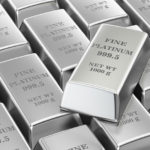Weekly Market Report 10/24/11
GOLD
All the conflicts and mixed messages that have come from European financial leaders during the 13 emergency summit meetings in the past 21 months continued last week. This indecision is causing much higher volatility in both gold and silver pricing. Gold and Silver trading volume was much higher every day last week compared to the prior week. Higher trading volume is normally bullish, but last week gold was down $47, closing at $1,636 per ounce on Friday.
Over the weekend, the ECB Financial Minsters met in Brussels to try to reach a consensus for a solution to the Eurozone Sovereign debt problem and the amount of funds that would be needed to recapitalize their banks. It appears that many earlier agreements are now subject to renegotiation; for example, back in July, officials from the European Central Bank made a deal with the banks holding Greek bonds to take roughly a 21% loss. Now, both the European Central bankers and the International Monetary Fund have said that the situation is worse than it was originally thought to be and the banks need to take a 50% loss. European banks must also raise $140 Billion in new capital within the next nine months to qualify for additional funding from the rescue fund, or to be re-capitalized.
The continued European negotiations are having a negative effect on the world’s financial markets, creating uncertainty and causing lower gold prices last week. If the ECB, the Group of 20, and the IMF could at least identify the severity of the problem, and offer an outline of possible solutions, the markets would be less volatile.
Deutsche Bank doubts that European officials will use gold holdings for programs that deal with the continent’s sovereign-debt crisis. “In the past, gold has been a useful asset for European governments as they attempted to reduce budget deficits and outstanding debt levels in the run-up to EMU entry, which was assisted by profit transfers from central banks to national governments, when gold was valued at market prices rather than book value,” the bank says. “However, we attach a low probability of European officials using gold reserves in the context of the euro crisis. Gold holdings are still in the possession of national governments. Moreover, in terms of valuation, euro-area gold holdings represent little more than 6% of public debt outstanding.”
GALLUP POLL
A recent Gallup telephone poll of over 1,000 adults showed that 34% of Americans believe that gold is the best long-term investment. Real estate is a distant second at 19%, stocks & Mutual funds were third at 17%, and Bank savings accounts or CD’s were only 14%. Gold is Americans’ top pick as the best long-term investment regardless of gender, age, or income level. The poll also showed that older middle-income American men, and Republicans, are more attracted to Gold than other Americans.
Bank of America warns of downgrade to U.S. credit rating
Last Friday, Bank of America Merrill Lynch economists warned that America’s credit rating is likely to take another hit before the end of 2011, threatening renewed market turmoil.
In that report, BofA Merrill said that it sees little hope of a breakthrough by the congressional “super committee” on deficit reduction. The bipartisan group has until Nov. 23 to identify $1.5 trillion in deficit cuts over the next 10 years -- through reduced spending, tax hikes or both.
If the U.S. credit rating is downgraded, I believe that it will accelerate the pace of countries that are moving their central bank reserves from U.S. Dollars into Gold.
SILVER
Silver declined $0.98 last week, closing Friday at $31.19 per ounce on increasing volume.
With the exception of Thursday, when Silver reached $29.94 per ounce briefly early in the morning, silver stayed above the psychological $30 price level all week.
Last week we saw very heavy demand from the Asian markets and this caused shortages of physical silver supplies. The United States Mint’s 1oz Silver Eagle sales have reached an all-time record of more than of 36 million coins, and we still have more than two months left in this year.
This Week’s recommended investment commitment and diversification:
Precious Metal commitment: Minimum of 35 % of investment capital
Diversification: Gold 66%, Silver 24%, Platinum & Palladium 10%
Diversification includes long term investment quality rare coins and short term bullion products.
Gold/Silver Mining Stocks and Funds Update
Back in June I wrote a series of reports in this Weekly Market Update on why you needed to sell your gold and silver mining stocks and funds and use those funds to buy physical gold and silver. I said that the risks of government nationalization, labor strikes, and potential environmental problems would cut production and increase costs. It’s clear that my concerns about owning gold/silver mining stocks were justified and that the problems are accelerating.
In August, the President of Venezuela, Hugo Chavez, nationalized Venezuela’s gold mining industry. His action gives the government total control over all gold being explored and produced in Venezuela. Chavez also repatriated $11 billion in Venezuelan gold reserves currently being held by U.S. and European central banks.
On October 21st a report in the International Business Times stated that mining strikes proliferate around the world. The article states that the problem has stretched from Peru to Africa to Indonesia, and remained peaceful, while others have not. Some have even entailed fatalities.
Demands range from higher wages to greater safety precautions to more managerial control over how the mines are run.
Here is a sample of current and recent mining strikes.
1. Grasberg Mine - This is the largest gold mine in the world and the third largest copper mine in the world. Owned by Freeport-McMoRan Copper & Gold Inc., it is located in the province of Papua in Indonesia and has about 8,000 workers.
Miners went on strike Sept. 15 in a pay dispute. Authorities report that this week three people have been killed by gunmen near the remote mine. On Oct. 10, two miners were killed in a clash between police and striking miners. Many more have been injured.
2. Cerro Verde Mine - This is the third largest copper mine in Peru. The facility, which supplies 2% of the world’s copper and also produces molybdenum, is located in the south of Peru. Freeport-McMoRan Copper & Gold holds a majority stake in the project.
Miners went on strike at the end of September, and are receiving public support from the nation’s newly elected leftist president, Ollanta Humala. The mine normally employs about 2,000 people.
3. Yanacocha Mine - This is one of Latin America’s largest gold mines. Last year it produced 1.5 million ounces of gold, or about 1.6 percent of the world’s supply. Newmont Mining Corp. holds a controlling interest in the mine, located in northern Peru. On Monday, Newmont halted work after protesters blocked an access road and torched eight pieces of earth-moving equipment.
4. Chambishi Mine - This is a huge copper mine owned by China’s NFCA Mining, a unit of China Nonferrous Metals Corp. On Thursday the Chinese company fired at least 1,000 miners for participating in a strike.
5. Crocodile River Mine - This South African facility is owned by Canada-based Eastern Platinum Ltd., which said this week that this year’s production fell on a year-over-year basis by 29%, to 26,995 ounces.
6. Bafokeng Rasimone Mine - Miners have been striking for nearly a week and platinum production has already started slowing, said owner Royal Bafokeng Platinum Ltd.
7. Everest Mine - This facility is owned by Aquarius Platinum Ltd., which just reached an interim settlement with the union representing its miners. Though brief, the strike was effective enough to halt production.
8. A group of mines employing about 5,000 workers in South Africa, owned and operated by Anglo-Swiss miner Xstrata Plc - Tensions with the miners, who went on strike Sunday, are escalating. On Thursday Xstrata withdrew an offer of share ownership after union leaders dismissed the proposal as a mere token
There are many more major mining operations that have lost production due to similar problems. Lower gold output is negative for mining shares but positive for physical gold ownership. I believe it is not too late to switch your gold/silver mining shares and funds into physical gold/silver investment products.
REMEMBER THE BLOG
If you want to be updated on what is happening in the gold, silver, and rare coin markets any weekday, our company offers a daily blog Monday to Friday at www.stupplerblog.com
All statements, opinions, pricing, and ideas herein are believed to be reliable, truthful and accurate to the best of the Stuppler & Company’s knowledge at this time. Stuppler & Company disclaims and is not liable for any claims or losses which may be incurred by third parties while relying on information published herein. Individuals should not look at this publication as giving finance or investment advice or information for their individual suitability. All readers are advised to independently verify all representations made herein or by its representatives for your individual suitability before making your investment or collecting decisions.






